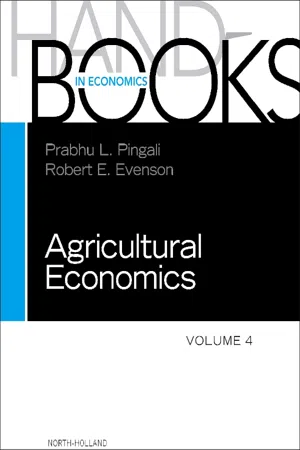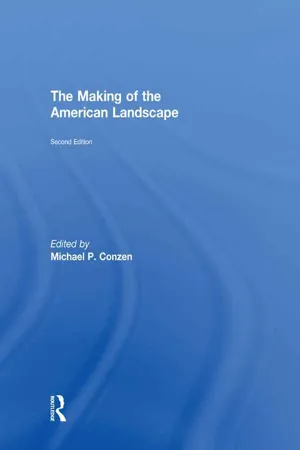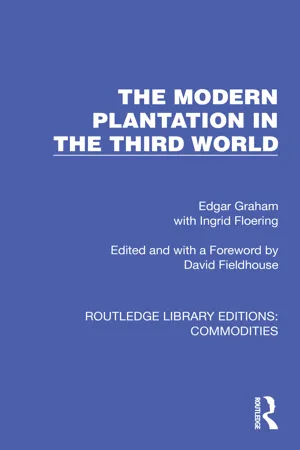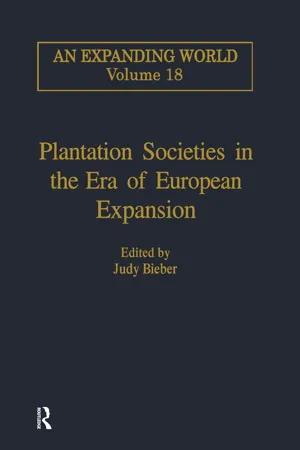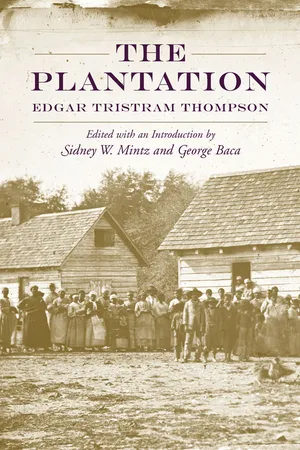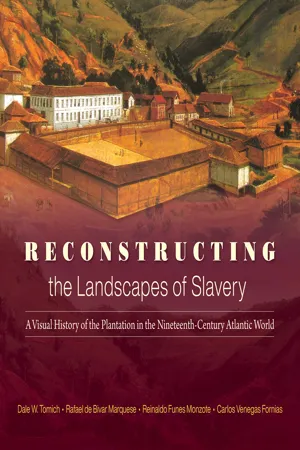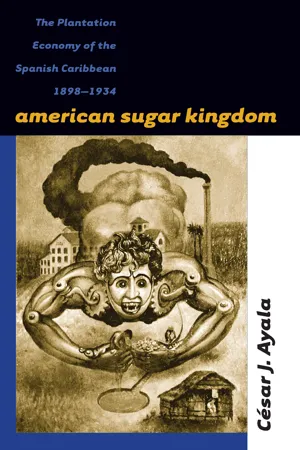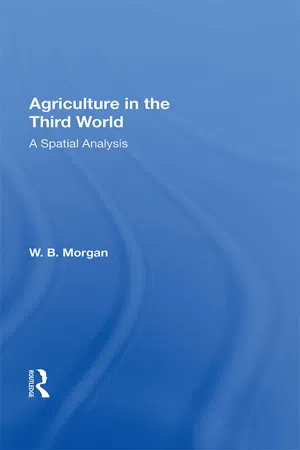Geography
Plantation Agriculture
Plantation agriculture refers to large-scale commercial farming of cash crops such as cotton, sugar, coffee, and rubber, typically in tropical or subtropical regions. It often involves the use of extensive labor forces and is associated with historical systems of colonialism and slavery. Plantation agriculture has had significant social, economic, and environmental impacts in the regions where it is practiced.
Written by Perlego with AI-assistance
Related key terms
Related key terms
1 of 4
Related key terms
1 of 3
9 Key excerpts on "Plantation Agriculture"
- eBook - ePub
- Robert E. Evenson, Prabhu Pingali(Authors)
- 2009(Publication Date)
- North Holland(Publisher)
1. Introduction
Plantations in the tropics, employing a large number of laborers under the command of centralized management hierarchy for the production of tropical cash crops for commercial sales, represent a unique organization in agriculture. They are unique in contrast with small farms based mainly on family labor, which are the common form of agricultural production in the world, including both temperate and tropical areas, with respect to subsistence crops such as rice, wheat, and maize. How has this organization emerged in the tropics? What roles has it played until present and might it play in the future? These are the questions addressed in this chapter.According to a broad definition by William Jones (1968, p. 154) , the plantation is “an economic unit producing agricultural commodities (field crops or horticultural products, but not livestock) for sale and employing a relatively large number off unskilled laborers whose activities are closely supervised.” This definition can include estate farms based on forced labor, such as slavery, corvee, and serf, instead of free wage labor and may also be called plantations. These estates based on forced labor were established typically before the onset of the industrial revolution in Europe and North America, having major impacts on the southern United States and Latin America, including the Caribbean as well as Eastern Europe (such as the Junker estates in Prussia). Despite their great historical interests, these estate farms based on forced labor are not included in this review. The plantations dealt with in this chapter are those based on free wage labor, which were typically established in tropical Asia and Africa after the mid-19th - eBook - ePub
- Michael P. Conzen, Michael P. Conzen(Authors)
- 2014(Publication Date)
- Routledge(Publisher)
Chapter six Transforming the Southern plantation CHARLES S. AIKEN T HE CONCEPT of modern Plantation Agriculture originated in Western Europe during the 11th and 12th centuries to mass produce crops in tropical and subtropical regions. Plantation Agriculture became one of the major components of mercantilism, the first phase in the development of modern Western economies. During the age of exploration, the plantation system spread to the Western Hemisphere. One reason European nations established colonies was that political control of tropical and subtropical areas permitted orderly safe mass production on plantations. That Plantation Agriculture was established in the area that became the southern realm of the United States was the consequence of its extension into the section of the North American continent with a subtropical climate. 1 A plantation is distinguished by several characteristics. 2 First, a plantation is capital-intensive. It is not a family farm. A large amount of land is needed to achieve economies of scale. The actual number of hectares, or acres, varies with the type of crop. Traditional Southern plantations ranged from several hundred to several thousand acres. Plantations have large resident labor forces. Studies of Southern plantations during the first half of the 20th century placed the minimum number of workers at five, assuming that each of the five was the head of a household. The traditional labor force was a family one, employing children in addition to adults. A plantation also specializes in one or two crops. Specialization allows the laborers to become highly skilled and efficient in the tasks associated with a crop. Proximity to fields saves time and increases efficiency. Also, the labor force is separate from management. A plantation is supervised by the owner or a manager. A large input of power (human, animal, mechanical) is essential. Lastly, a plantation has a nucleated settlement pattern - eBook - ePub
- Edgar Graham, Ingrid Floering(Authors)
- 2024(Publication Date)
- Routledge(Publisher)
From all these definitions the list of salient features is: a ‘capitalist’ type of organisation (which will be redefined later as ‘corporate’); a large labour force; extensive land areas; skilled management; close supervision for a system of detailed routine; export of the product. On-site processing and its integration with the agricultural side is important but is an essential element of the plantation only for certain crops, and is not a universal feature. Similarly estate housing is not universal, but is an important and indeed difficult part of the management task when it exists; it then becomes a defining part of the plantation.There is an extended variety of crops for which the plantation system can be used and which in turn influence its working and basic principles. Tea, coffee, coconuts and cocoa are grown in plantations in many countries. Sugar and tobacco are major commodity crops which are grown by methods which are often those of the plantation, and their divergencies can be used to test the definition. Cotton has been the subject of one of the biggest and earliest of modern experiments in the Gezira scheme in the Sudan.But the best examples to date are rubber and palm oil; indeed most of the characteristic features of the modern plantation, particularly in the management and supervisory structures and the techniques of the training of labour, arise from the methods originally conceived from around the beginning of the twentieth century in the rubber industry and developed and improved continuously since that time.What then is the management structure and the form of its organisation?The Organisation and Working of a Plantation
The key feature of a plantation is the use of detailed routine — the methods it employs, the framework that makes it effective and the technology and skills that are thereby deployed.This detailed routine is, as the definition states, a technology in itself. It is this which makes effective the application of the different sciences and ensures that the best practices are carried through. Its secret lies in continuity and planned repetition in the performance of well-defined and skilled tasks at the right time. The objective is to bring consistency of treatment to all agricultural operations at all times through a programme which can take into account all the factors — agronomic and economic. Such a programme must cover each estate, each division, each field and indeed each plant and tree regularly, with specific operations which incorporate the best practice, whether it be of clearing, planting, weeding, fertilising or harvesting. Moreover, each individual operation is the subject of constant study to improve its efficiency — to do it better and in less time, while simultaneously preserving and striving to improve the quantity and quality of the crop. - Judy Bieber, Judy Bieber(Authors)
- 2018(Publication Date)
- Routledge(Publisher)
From Madeira the plantation also was exported to São Tomé and to Principe in the Gulf of Guinea. It also was introduced into Brazil in the early sixteenth century when French Huguenots threatened Portugal’s claim to the sparsely inhabited region. When discovered, the native peoples of Brazil produced little of value to the commercially minded Portuguese. Not until after the introduction of sugar cane and the plantation was the Brazilian territory to become a valuable part of the empire. First, however, the native inhabitants had to be displaced, made slaves and/or replaced by imported Africans. Only then was Brazil to become a source of wealth to be envied and then copied by the other expanding nation-states of Europe.The main structural features of the plantations established in the tropical New World may be defined as follows. A plantation was: a) a unit of land in a tropical of sub-tropical region; b) on which a commercial crop (or crops) was (were) raised; c) for sale in the markets of Europe – for a profit; d) in which labour was supplied by slaves of non-European (and primarily African) origin; e) who, along with the land and other means of production, were owned and managed by Europeans; f) who, in turn, were subject to the sovereignty of a European nation-state.Sugar cane was to be the first crop the plantation was to be created to produce. The story of its diffusion from the Mediterranean basin, where the first plantations were established, to the New World shall be told in six parts. In Section I the introduction of the crop into the Mediterranean and the establishment of the first plantations is examined. Section II shifts the focus to continental Portugal to explore the national development of the first society to incorporate the plantation as part of a policy of national expansion. Section III then examines the settlement of the island of Madeira and the development of its sugar plantations in the fifteenth century. Section IV then places Madeira and its plantations within the framework of Portugal’s national expansion to show how the new form was to become a model for the settlement of other, strategic areas. Section V- eBook - ePub
- Edgar Tristram Thompson, Sidney W. Mintz, George Baca(Authors)
- 2012(Publication Date)
- University of South Carolina Press(Publisher)
28The production of a certain specific commodity may enter into the establishment of a plantation as the original and determining purpose of those who invest the capital in the enterprise. Now that the developed pattern of the plantation is thoroughly a part of the capitalistic culture of America and Europe this is the case with most modern plantation settlements, such as the Ford and Firestone rubber plantations in Brazil and Liberia respectively. In earlier plantation colonies, however, the settlement frequently developed along economic lines not contemplated by those who sponsored it, and forced modifications in original intentions. This was true of Virginia. In such cases the particular staple, around whose production the plantation is organized, is a discovery subsequent to the establishment of the plantation itself. Concentration upon the culture of the particular agricultural commodity which proves most profitable leads to changes in its form and structure. It becomes a landed estate and an economic institution.The peculiar features of this institution appear when agricultural industry is contrasted with manufacturing industry. Agriculture yields a different product when pursued on different kinds of soils and in different climates. Manufacturing industry, with the same skill and activity, may produce everywhere the same product. Agricultural production is dependent upon the seasons which means that it cannot be speeded up although its scale may be enlarged. The daily and minute division of labor which is characteristic of large-scale manufacturing industry is impossible in agriculture where the labor process is subject to constant interruption by seasonal changes. The seasonal nature of agriculture makes the requisite labor force imperative at critical periods. Where seasonal labor cannot be secured it becomes necessary to maintain sufficient labor throughout the year to meet such situations.29 - eBook - ePub
Reconstructing the Landscapes of Slavery
A Visual History of the Plantation in the Nineteenth-Century Atlantic World
- Dale W. Tomich, Reinaldo Funes Monzote, Carlos Venegas Fornias, Rafael de Bivar Marquese(Authors)
- 2021(Publication Date)
- The University of North Carolina Press(Publisher)
11 In these new commodity frontiers, both nature and slave labor were profoundly reconfigured in order to conform to the scale and rhythm of industrial production. Both the zones of commodity production and the plantations themselves were far more extensive than their predecessors. In each zone the concentration of enslaved laborers reached unprecedented levels. In each, the pressures of the world market and the scale of production put the emphasis on productivity—increased output per acre, increased output per slave—and intensified the labor of the enslaved population. The new commodity frontiers formed industrial hinterlands that incorporated new technologies of production and transportation, new strategies of land and crop management, and new work routines and labor discipline that were expressed in the physical organization of the landscape itself. The mass production of these crops transformed the landscape of each particular zone. In each, the crop itself became a powerful symbol of national or regional identity that defined place—the South and cotton, Cuba and sugar, Brazil and coffee. Each symbol viewed in isolation celebrated prosperity, the abundance of a particular nature, and a particular way of life while masking the brutality of plantation slavery.Analysis of the landscapes of these plantation frontiers requires a broadened focus. Working landscapes cannot be reduced to a singular relationship of vision and power. Rather, they are the result of the practical interrelation of nature and human activity. They are formed through the interactions of definite material, social, and cultural practices that are specific to each particular ecology and each particular crop. Thus, these plantation landscapes form what Meinig refers to as everyday landscapes. However, they are at the same time extraordinary landscapes. In contrast to Meinig’s emphasis on the unconscious and routine character of ordinary landscapes, conscious planning and calculation in order to maximize control over land and labor and to increase productivity were decisive elements in the creation of the plantation landscapes under consideration here. The natural environment was systematically subordinated to the specialized production of a single commercial crop destined for the world market. Cotton, sugar, and coffee each grow in a distinct environment and have different physical characteristics. The production of each entails material processes that are peculiar to it. The arrangement of fields, selection of crop varieties, and organization of planting routines were planned to maximize output. Production was forcibly organized through the enslavement of workers. The size and composition of the labor force had to conform to the requirements of the crop. At the same time, the social relations of slavery provided a specific means of organizing labor and of regulating social life on the plantation. The working activity and conditions of life of the enslaved population were organized through the social domination and power of the slave owner and the supervisory staff, but power itself could be exercised only through the material conditions of production and the social relations of slavery. - eBook - ePub
American Sugar Kingdom
The Plantation Economy of the Spanish Caribbean, 1898-1934
- César J. Ayala, C?sar J. Ayala(Authors)
- 2009(Publication Date)
- The University of North Carolina Press(Publisher)
At the end of World War I the three islands produced close to one-third of the sugar sold in the world market. Production continued to increase until 1925 (6,753,000 tons) and fell thereafter because of a series of restrictive policies, first on the part of the Cuban government and then on the part of the United States, aimed at reducing overproduction and restoring prices. This expansion accentuated Cuba’s traditional dependence on sugar exports, replaced coffee as the main export of Puerto Rico, and elevated sugar to first rank among the Dominican Republic’s export crops. Large parts of the islands were converted to cane agriculture, and the livelihood of millions of people became dependent on the international price of sugar. No region of the world ever experienced a process of expansion of sugarcane Plantation Agriculture comparable in scope and depth to that which took place in the Spanish Caribbean in the first three decades of this century.An examination of the expansion of sugar plantations in this region in the twentieth century necessarily calls forth an inquiry into its specific features and how they compare to previous systems of Plantation Agriculture in the Caribbean. The persistence of plantations in the Antillean archipelago throughout the centuries has attracted the attention of scholars who have pondered their importance not only for the Caribbean but for the development of the world economy as a whole throughout its different stages since the formation of a world market in the early sixteenth century. This book borrows its tide from Eric Williams, whose scholarship is probably the best-known English-language synthesis of the development of Plantation Agriculture in the Caribbean from a world-historical perspective.1 - eBook - ePub
- W. B. Morgan(Author)
- 2019(Publication Date)
- Routledge(Publisher)
agreste zone. Cattle occupy the fallows subsequent to cultivation and a sort of symbiosis of cattle and cropping, tenant and rancher, is achieved with supplementary incomes for the tenant farmers from seasonal work on the sugar plantations of the coastal region (Sternberg, 1967).In Africa temporary cultivators have appeared in some cocoa and coffee farming areas, but other groups have also appeared, including more permanent share-croppers and seasonally hired labourers, who have often assisted by tending not the perennial crops but the food crops, both for the farmers’ families and for local sale. Thus the emergence of a regional system of export crop and food crop production has been accompanied by the movement to different parts of that system of various classes of migrant labour. As the system expands less fast and intensification has become more significant, so the migrant labour force has become more settled and the pace of agricultural migration has slowed. Urbanward migration has begun to take its place, sometimes with the regional agricultural system acting as a sort of routeway for migrants who have moved to villages and temporary agricultural work near the large cities before moving to the cities themselves. The general tendency to use gravity models to describe such migration is in accord with the tendency for greater movement to take place the closer the location lies to the centre of attraction. Nearby locations are better informed, usually have more contacts in the town than more distant areas and may develop better expectations of urban employment through greater and more reliable information. Todaro (1971) has developed a useful formula for calculating the discounted present value of the expected ‘net’ urban-rural income stream over the migrants’ time horizon. Hart (1973) has argued that urbanward migration in part reflects a wage-eamer’s desire to diversify his income by trying to obtain several jobs. The general coincidence, apart from Zaire and interior Brazil, of rainforest and coastlands and the resultant proximity of tree-cropping to ports, has helped to reinforce this urbanward and coastward labour trend which has moved against the old frontier type advances. The modern development of interior growth poles may be seen not as a logical extension of earlier advance, but as a counter to current trends. - eBook - ePub
Agricultural Expansion and Tropical Deforestation
International Trade, Poverty and Land Use
- Solon L. Barraclough, Krishna B. Ghimire(Authors)
- 2013(Publication Date)
- Routledge(Publisher)
A case study of the CDC in the South-west province showed many interesting features and processes of forest clearance. CDC is the largest, most diversified and one of the most efficient corporations in the country. It is involved in industrial plantations of mainly banana, rubber, oil palm and tea, covering an area of 40,000 hectares. Some of these crops have periodically been highly profitable, but others were much less so. They have differing impacts on the forest area.There exist three types of farming systems within areas operated by the CDC. First, there are areas directly managed by the company. These are highly mechanized plantations, based on sophisticated methods of land development and crop production. Second, there are areas that were originally developed by the company but considered later on to be uneconomic, frequently due to decline in the price of the crop planted. These areas are leased on a contractual basis to individuals who can muster capital and hired labour. Lastly, the company has sought to encourage smallholders in the vicinity to plant cash crops by providing production inputs in return for their agreement to sell their produce to the company. In addition to these farming systems, it should also be noted that many of the company’s workers, totalling some 15,000 in 1994, have tended to maintain small farms in the area by clearing forests in order to supplement their low wages by selfprovisioning and sales in local markets.These different farming sub-systems interact with important consequences for both deforestation and livelihoods. Rubber and oil palm production, for example, have been quite promising in recent years. The company has sought to increase land area under these crops, while keeping the existing area under other crops such as banana. Some 4000 hectares of the recently deforested land in the Boa plain has been planned for industrial plantation and 1000 hectares in smallholdings of plantation crops. The need on the part of the CDC to remain economically viable, on the one hand, and the need of small farmers and CDC workers to increase production for cash, on the other hand, will continue to increase pressures for agricultural expansion in the area.
Index pages curate the most relevant extracts from our library of academic textbooks. They’ve been created using an in-house natural language model (NLM), each adding context and meaning to key research topics.
Explore more topic indexes
Explore more topic indexes
1 of 6
Explore more topic indexes
1 of 4
